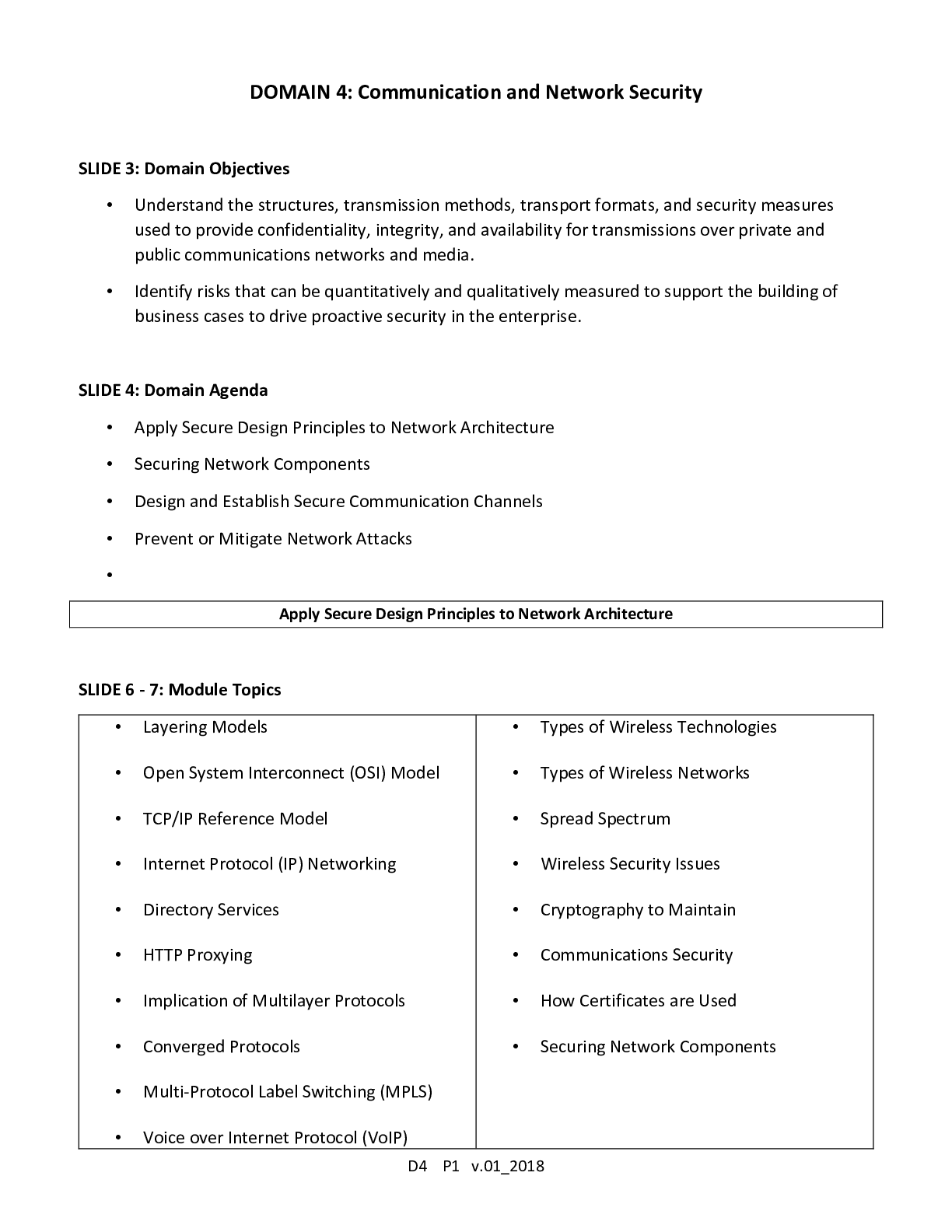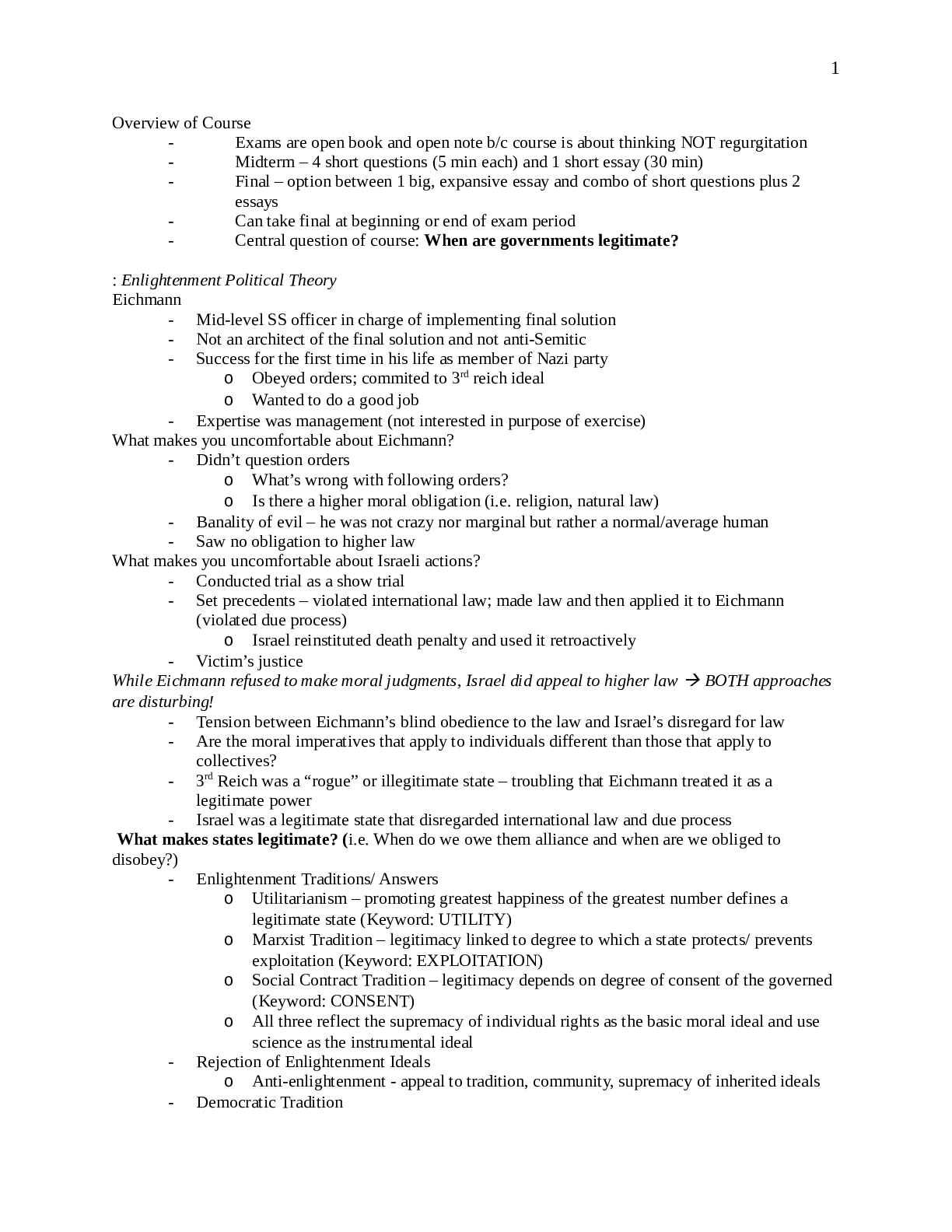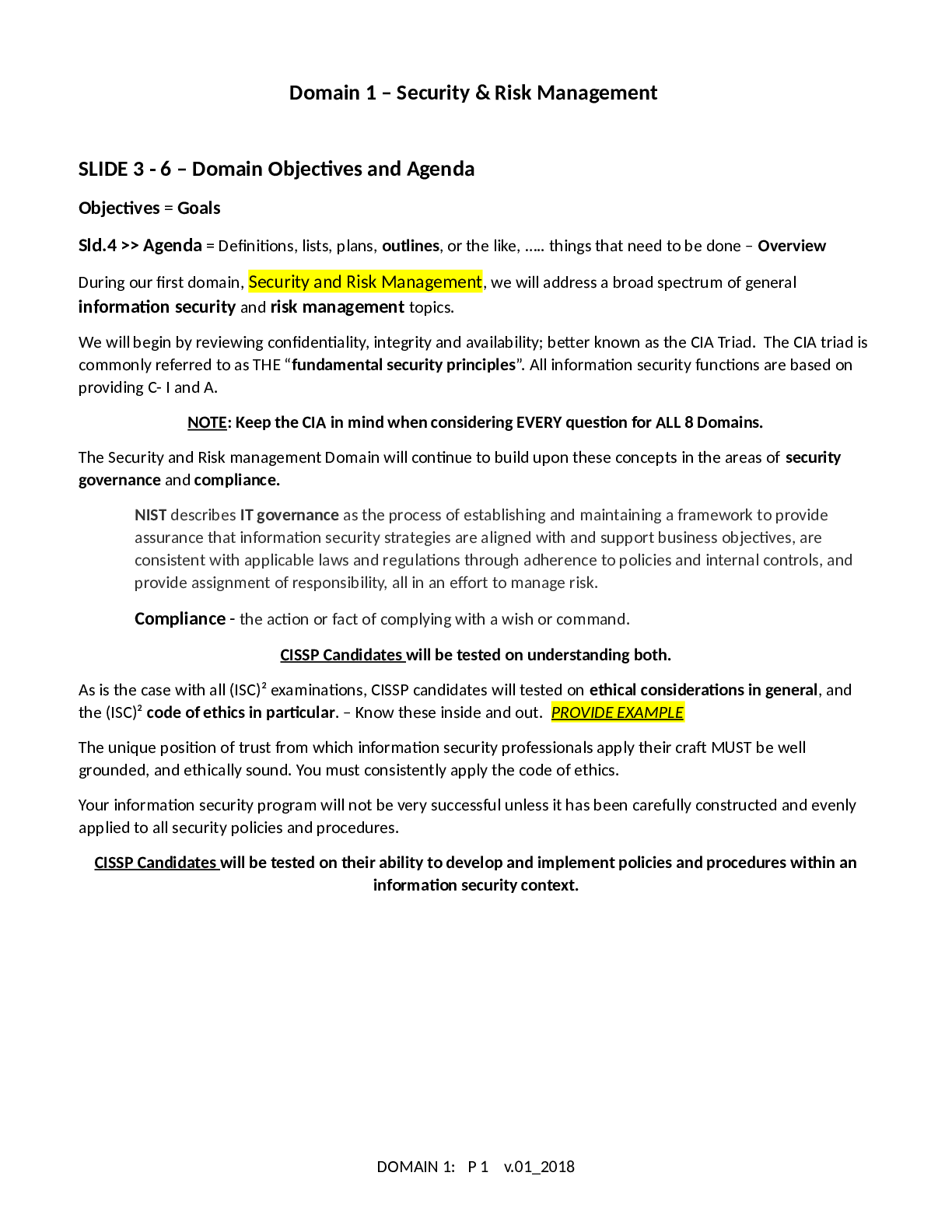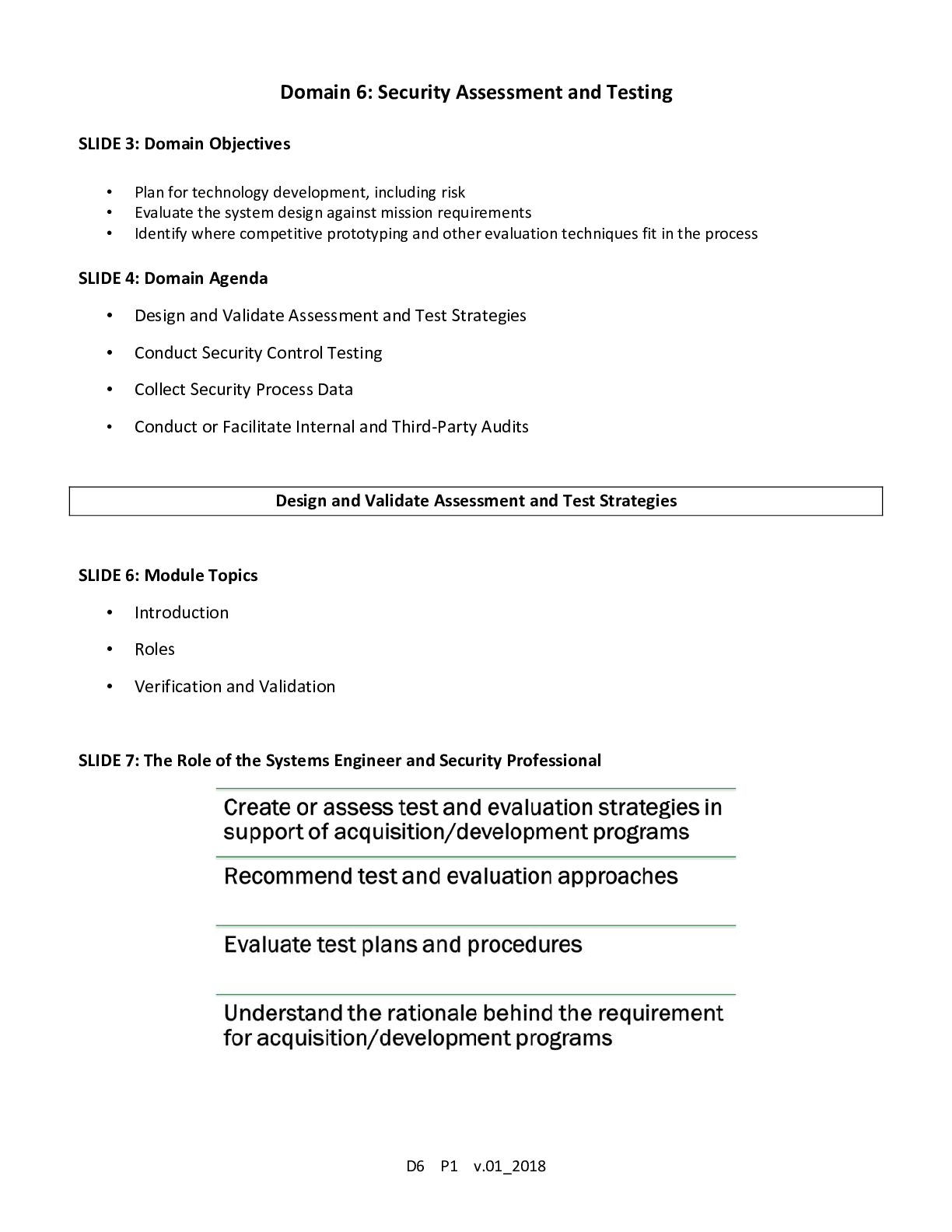Computer Science > Study Notes > DOMAIN 4: Communication and Network Security Western Governors UniversityCISSP 101Notes - Domain 4 - (All)
DOMAIN 4: Communication and Network Security Western Governors UniversityCISSP 101Notes - Domain 4 - EDT_JAN18
Document Content and Description Below
DOMAIN 4: Communication and Network Security SLIDE 3: Domain Objectives • Understand the structures, transmission methods, transport formats, and security measures used to provide confidentiality... , integrity, and availability for transmissions over private and public communications networks and media. • Identify risks that can be quantitatively and qualitatively measured to support the building of business cases to drive proactive security in the enterprise. SLIDE 4: Domain Agenda • Apply Secure Design Principles to Network Architecture • Securing Network Components • Design and Establish Secure Communication Channels • Prevent or Mitigate Network Attacks • Apply Secure Design Principles to Network Architecture SLIDE 6 - 7: Module Topics • Layering Models • Open System Interconnect (OSI) Model • TCP/IP Reference Model • Internet Protocol (IP) Networking • Directory Services • HTTP Proxying • Implication of Multilayer Protocols • Converged Protocols • Multi-Protocol Label Switching (MPLS) • Voice over Internet Protocol (VoIP) • Types of Wireless Technologies • Types of Wireless Networks • Spread Spectrum • Wireless Security Issues • Cryptography to Maintain • Communications Security • How Certificates are Used • Securing Network ComponentsD4 P2 v.01_2018 SLIDE 8: Layering Models There are two layering models that in use today: The first of being the OSI reference model. It is important to understand that the OSI Reference model is only used for standardization. It is not used to transmit data. Transmission of data is the responsibility of the TCP/IP Model (aka DoD Model) SLIDE 9: OSI Model SLIDE 10: Layer 1 Physical Layer The physical layer consists of the electronic circuit transmission technologies of a network. It is a fundamental layer underlying the higher level functions in a network. This is perhaps the most complex layer in the OSI architecture due to the ple-thor-a of available hardware technologies with widely varying characteristics. The physical layer defines the means of transmitting raw bits rather than logical data packets over a physical link connecting network nodes. [Show More]
Last updated: 1 year ago
Preview 1 out of 91 pages
Instant download

Buy this document to get the full access instantly
Instant Download Access after purchase
Add to cartInstant download
Reviews( 0 )
Document information
Connected school, study & course
About the document
Uploaded On
Aug 05, 2021
Number of pages
91
Written in
Additional information
This document has been written for:
Uploaded
Aug 05, 2021
Downloads
0
Views
56



















